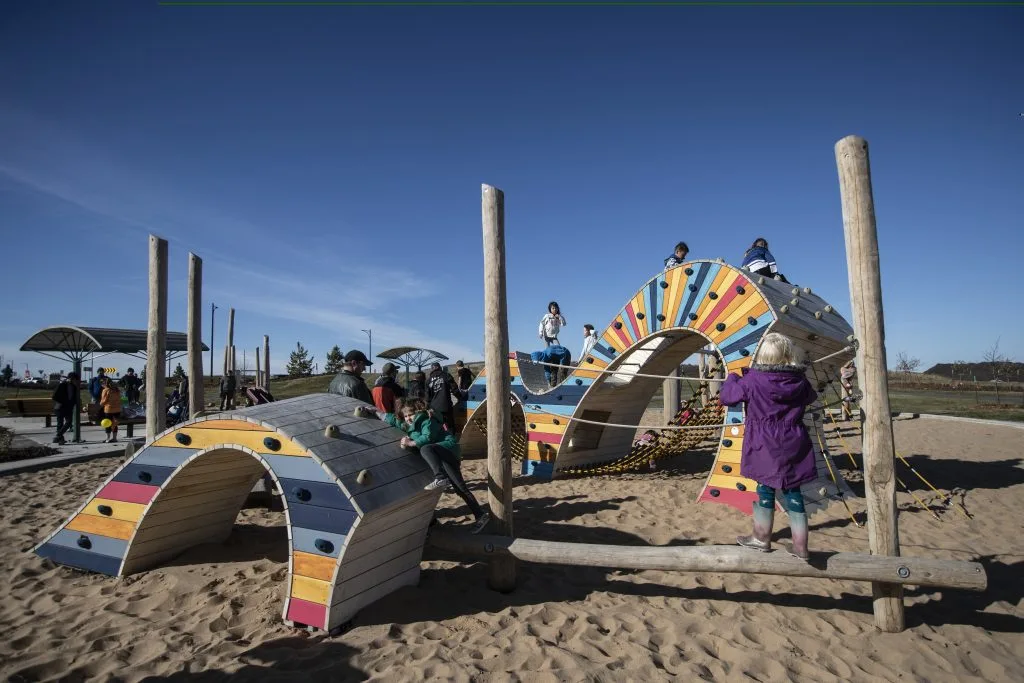To play is to engage in sport or recreation, or to act freely. In Edmonton, designers, builders, developers, and city planners are working hard to ensure that the word lives up to its expectations.
When considering urban landscapes, where do parks and open spaces fit into the list of necessities? According to Shelley Robinson, Certified Playground-Design Inclusion Educator at Park N Play, it should be at the top.
“Being able to play should be a top priority, regardless of age or ability,” she said. “It’s a carefree way to enhance one’s mental and physical health, and it’s not just for kids. It’s way more multigenerational now.”
While Robinson isn’t a developer or city planner, she describes herself as a play-ologist. “It’s the truest definition of who I am and what I do – whether it’s planning new communities, revitalizing historic parks, or designing open areas where play, art, and culture meet.”
Through her work on managing sales teams across the nation to working with builders and developers in Edmonton, Robinson has been building playgrounds in Northern Alberta for 20 years, advocating for safe and fun neighbourhoods.
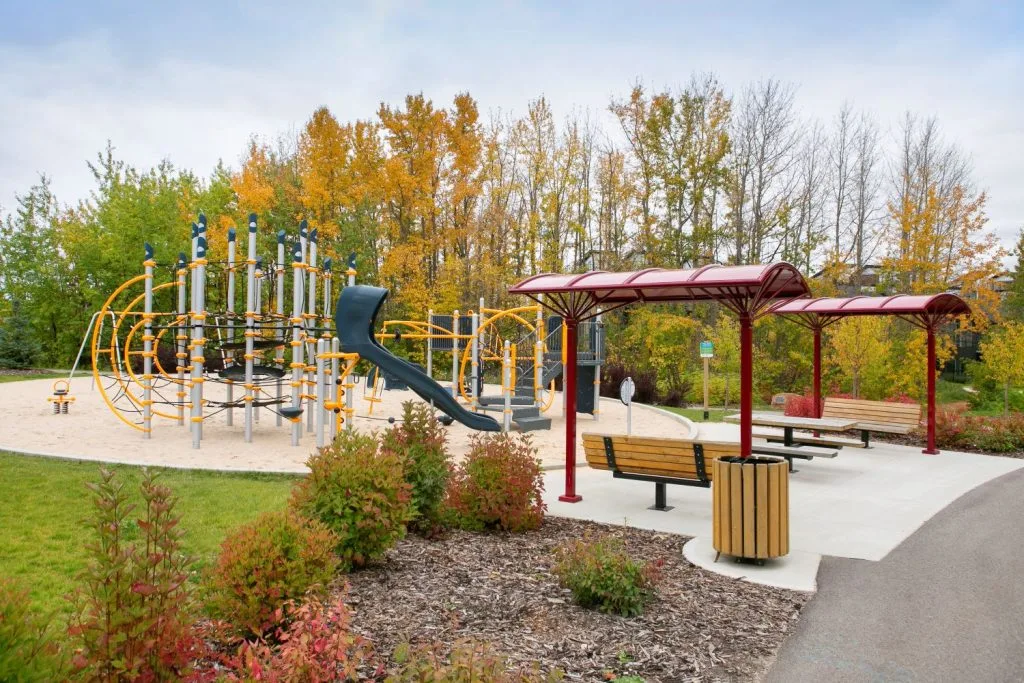
Planning for parks, from drawing board to final product
Every planner and municipality is different, but a park itself is always a major part of the construction period of a community. Beyond drawing families in, it’s crucial to showcase the neighbourhood’s amenities and open areas.
“Play means recreation, whether it’s for children or adults. It creates spaces where people can becurious, explore freely, and build bonds with others,” said Arman Pandher, President at ART Homes. “In community design, play is about creating moments that bring people together and inspire a sense of belonging.”
Pandher grew up in a community where outdoor play was part of everyday life, and the culture emphasized spending time outside and making the most of shared public spaces. “Those early experiences taught me that the best play environments aren’t always about elaborate structures, they’re about opportunities for creativity, exploration, and connection with others,” he said.
Now, as an adult, he can incorporate play by making time for hobbies and activities that bring him joy and reduce stress, whether that’s through sports, travel, or just being outdoors.
As urban enthusiasts, we can often resonate with a need for relaxation and escape from our day-today lives.
For me, some of the fondest memories I have growing up are tied to outdoor play, whether it was walking around the trails near my childhood home or spending my evenings at a playground with friends, it wasn’t the fanciest space, but it gave us freedom, connection, and happiness.
Now, it’s normal to seek out those same kinds of open places to recharge, whether that’s running through Edmonton’s river valley trails or meeting friends at the park for a picnic. It doesn’t have to have bells and whistles; sometimes, it’s just about savouring the simple moments and reminding ourselves that play is less about equipment and more about creating a space to just be.
“When we’re building communities, our top priorities are safety, connectivity, inclusivity, and longterm livability. Play areas are a critical part of that, not just for children, but as shared spaces where neighbors meet, families gather, and community bonds form,” Pander added. “They rank high on our list of necessities because they directly contribute to a community’s social health and overall quality of life.”
Much like ART Homes, many industry contributors also tend to focus on accessibility, variety, and integration into the built environment, whether by designing for multiple age groups and ability levels, ensuring visibility and safety, or incorporating natural elements for sensory engagement.
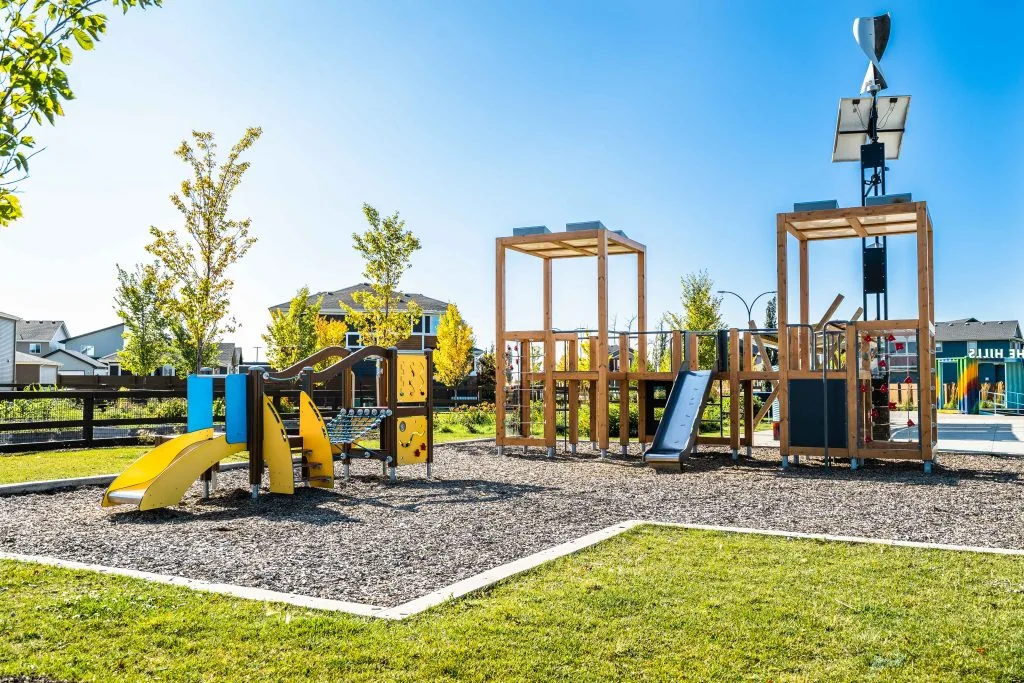
How we play: Without limits or rules
Creativity, curiosity, imagination, movement, and emotions all fit into the process of designing places for play.
“We have been fortunate enough to partner on parks of all sizes in different communities, from pocket parks and community parks to district level parks and destination sites,” Robinson said. “This region is a leader in Northern Alberta for both our quality and quantity of playgrounds and parks, and it’s evident in spots like the planned Hawrelak Park, Borden Park, and Meadowview Park in Leduc. And, it doesn’t stop there. In Edmonton, there’s no shortage of opportunities to play. As of 2022, there are 56 dog parks and 426 playgrounds, amounting to 6 hectares of parks and green space per 1,000 Edmonton residents.
Another way to play is through games and personal experience, using these exercises as a way to playfully plan the city. According to Robinson, the sight of people being outside, active, and visible in a public space is not just a sign of their own wellbeing, but of a generally healthy and liveable urban environment.
One of the biggest misconceptions about places of play in the city and surrounding areas is that they are often small spaces with jungle gyms designed for young children. “That’s just not true,” she said. “When you consider the older crowds, we often think beyond traditional playground design, creating a place for all ages to congregate, whether independently or collaboratively. These are places with a lot of multigenerational use, where a student might take their laptop to study, or someone might go for a picnic.”
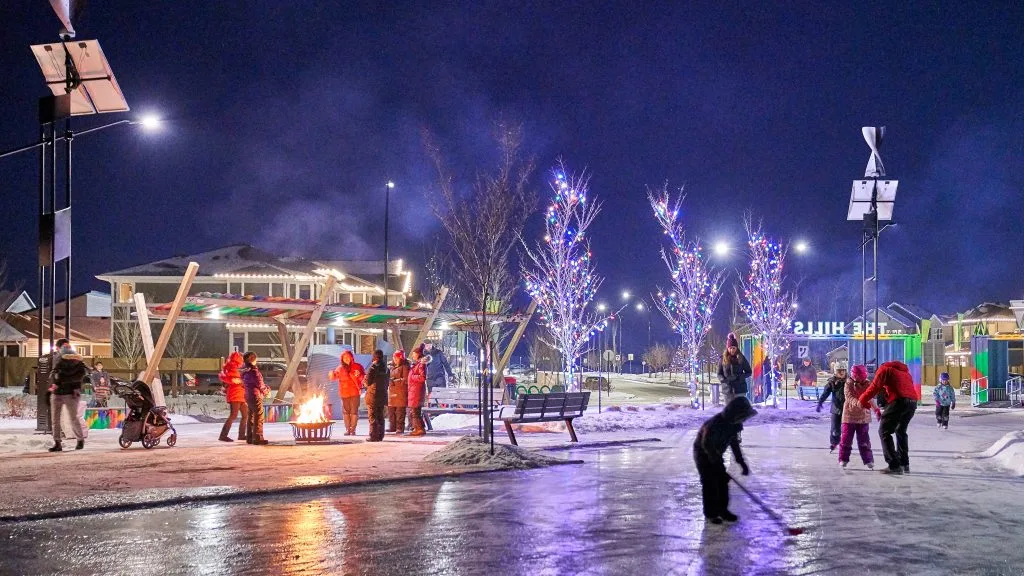
Where we play: Thinking beyond the basics
Places for play aren’t always in a suburb or public area. In fact, most times, places for play open up in the most unpredictable of areas. In Edmonton, post-secondary institutions are examining how to incentivize people to play, no matter their age group, ethnicity, or lifestyle.
“Students need spaces to socialize on and off campus to connect with their community,” said Dr. Annette Trimbee, President and Vice-Chancellor at MacEwan University. “This could be bars and restaurants, but it’s also evident in the green spaces, art, music and public events like the Campus Block Party for downtown students. As MacEwan grows, the need for these places will grow as well.”
Making space relies on planning and figuring out what will be included. We can think about it as though neighbourhoods are our playgrounds, whether they include pocket parks, district parks, community parks, or just natural areas, there is truly a time and space for everyone.
“We associate play with childhood, but the benefits extend well into university and through adulthood,” Dr. Trimbee noted. “Spaces to play, imagine, be creative, and explore help students manage stress, combat anxiety, and improve social connectedness and belonging. Play is spontaneous, self-directed and unstructured, but making places for play in urban environments is just the opposite,” she added. “These spaces need to be carefully planned so that they facilitate people coming together and finding ways to have fun.”
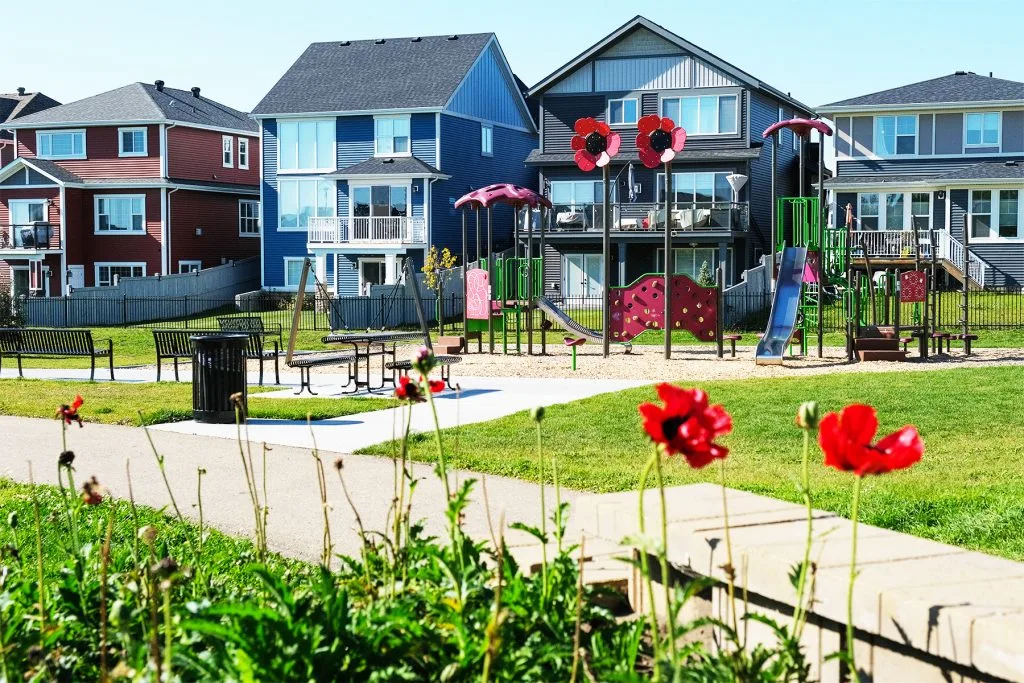
Why we play: Placemaking and wellbeing
At the very heart of understanding why we play lays the questions of who is playing, and what they are doing. In the planning stages of a park, most developers will already know the housing levels and demographic that the area will bring in. That’s where the playgrounds come in.
“The area might be used for new opportunity and investment, such as festival or concerts, open markets, and events,” said Robinson. “Or, it might just be a quiet space where less active people can go to bird watch and listen to the sounds of the river.”
By being able to get a sense of who will be spending time in the areas, it’s allowed Edmonton to stay ahead of the trends.
“We’re thinking and working in a way that utilizes future trends and forward-thinking,” she added. “Now, people don’t have to travel into the city. They can access parks that meet their needs, regardless of their abilities, language, age, or gender. It sets a precedent on not only what new communities are doing, but what they’re doing well.”
“Places for play is about bringing back a sense of play in the ways we plan and design our city and region,” said Jordan Hirtle, Manager of Landscape Architecture at Invistec Consulting. “Play removes boundaries and barriers, adds multigenerational spaces, and provides elements and design features that enable people of all ages to partake.”
There’s also an appetite for transforming current spaces. One way to do this, according to Hirtle, is by taking over spaces that are vacant and turning them into places for play. “We don’t always need a big shiny park,” he said. “It can be simple. Think about bringing back the front porch of a home as a place for people to sit, children to play, guests to perform, and everyone to connect.”
There is a sense of play in the planning process. Whether it’s through finding pleasure in design, or exploring the city, play is critical in maintaining our physical and mental health, fostering creativity, and enabling joy.
If we think of the city itself, it’s similar to one big playground. As the need for seamless neighbourhoods grows, it’s becoming more possible to view Edmonton itself as a place for play, experiencing the river valley on a bike ride or walk, sledding down a snowy hill in the winter, or using the outdoor courts at your local recreation centre.
The street is another example of a place for people to emerge with different activities. “You can go for a walk, ride your bike, or even play street hockey,” he said. “Take Europe, for example, there are less standards there; they have learned to embrace play, and they aren’t encumbered by the notion of taking risks. We want to make Edmonton like this.”
A big part of creating livable places and fun, healthy play spaces is reminding people why they’re important.
“We get so clogged up with our to-do lists that we forget about the simple things,” said Robinson. “We’re so driven by success and hard work that we’re not always dealing with the stress it brings. We’ll spend thousands of dollars to sit with a therapist, but not 15 minutes to sit at the park.”
Open spaces are a constant in our busy lives, and to industry professionals like Robinson, Pandher, Dr. Trimbee, and Hirtle, getting outside and utilizing these parks is not just a tried-and-true reset, but also a sense of freedom.
It’s a time for kids when rules don’t exist and there’s no rush or pre-determined timelines. For the 15 minutes they get to play outside, they think, “No one’s the boss of me,” and in a way, they’re right.
Places for play don’t always refer to your local neighbourhood swing set or sandbox. They’re intentional, complex projects that build out the city and create more dynamic, versatile and special places – places that Edmontonians are proud to call home.
Written by Payton Phillips
Originally published by Canadian Architect
